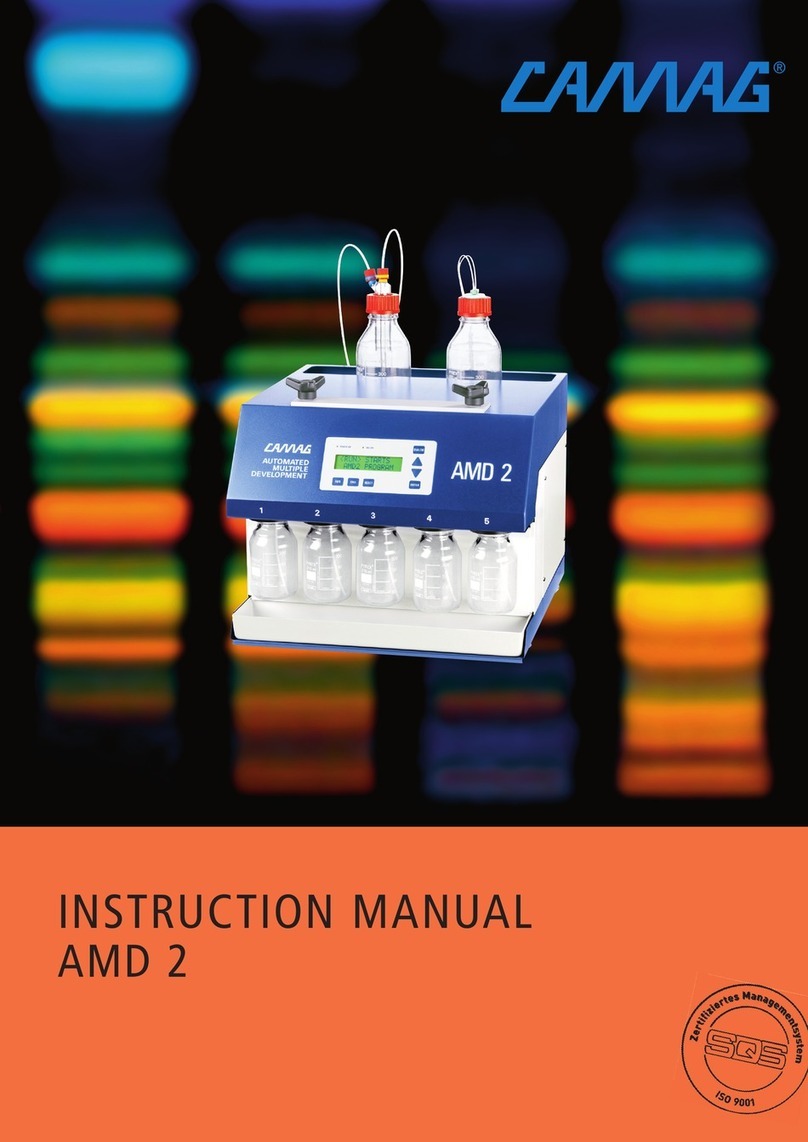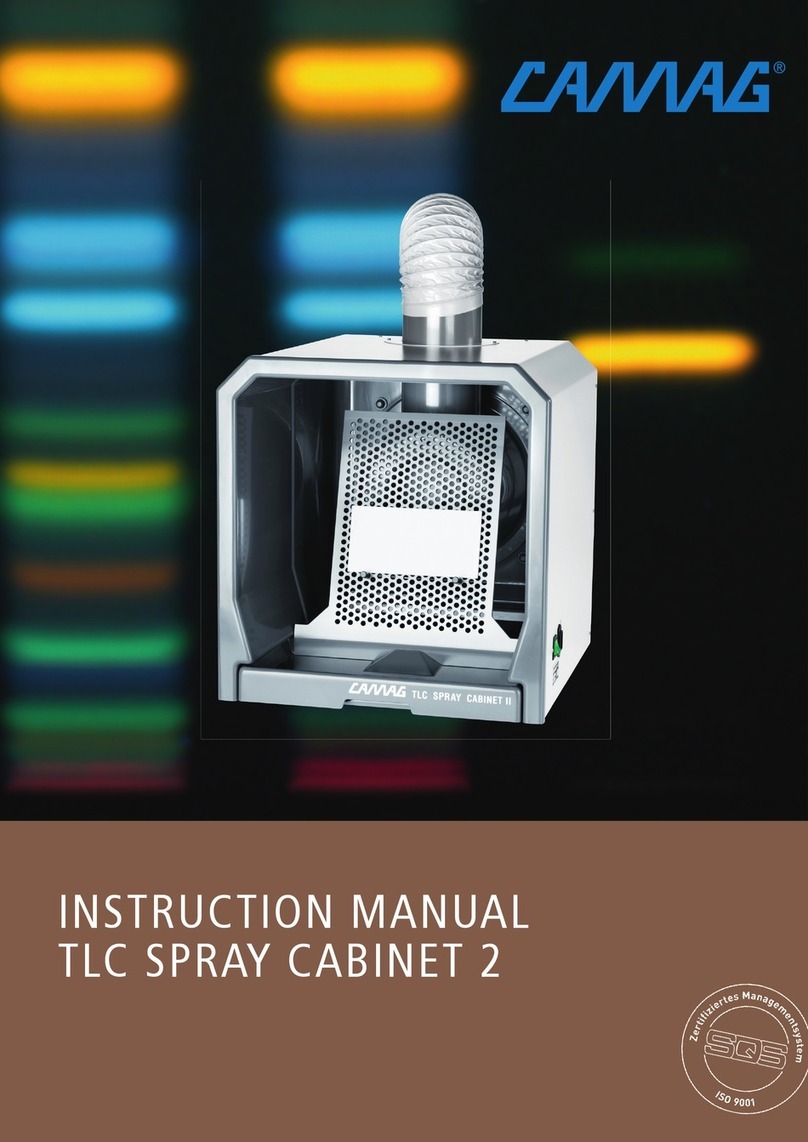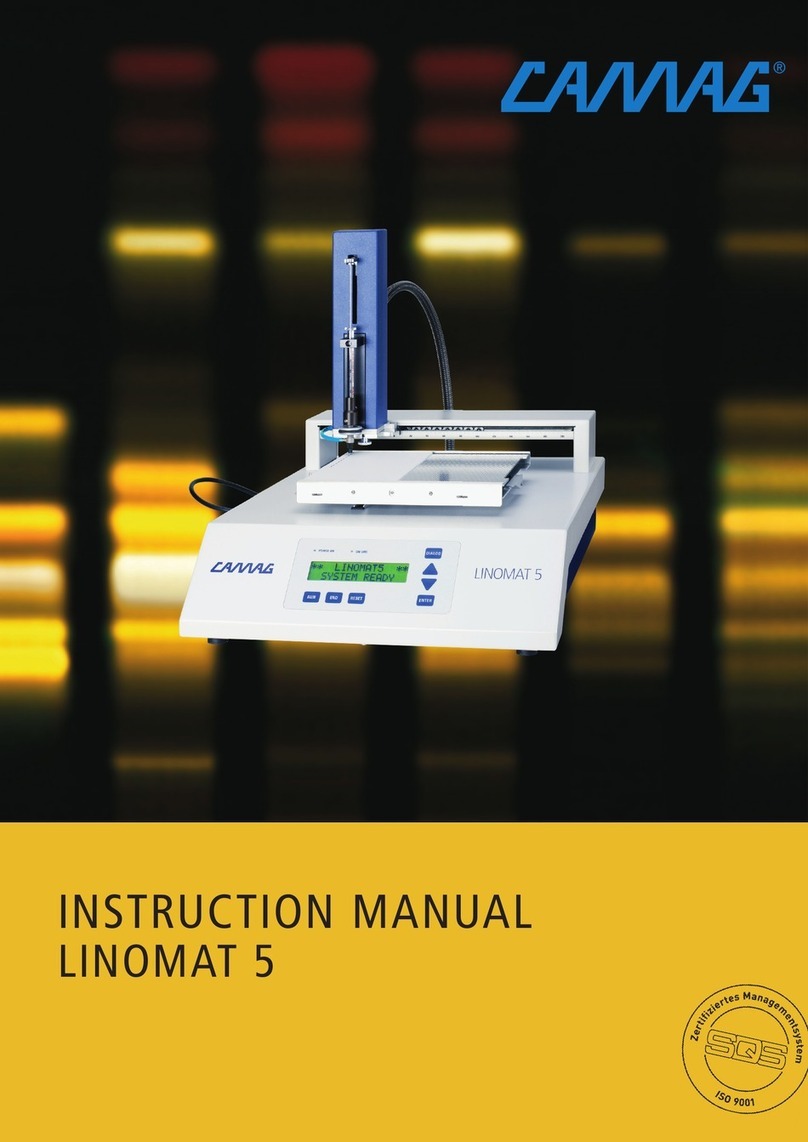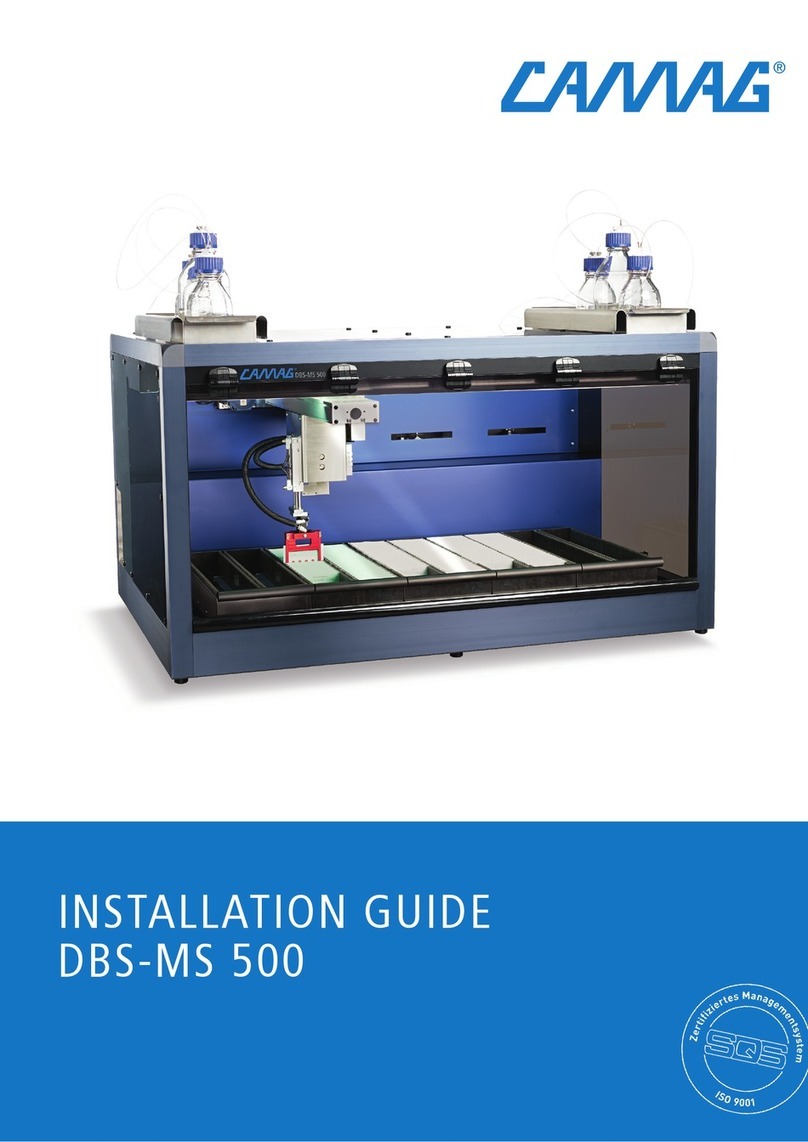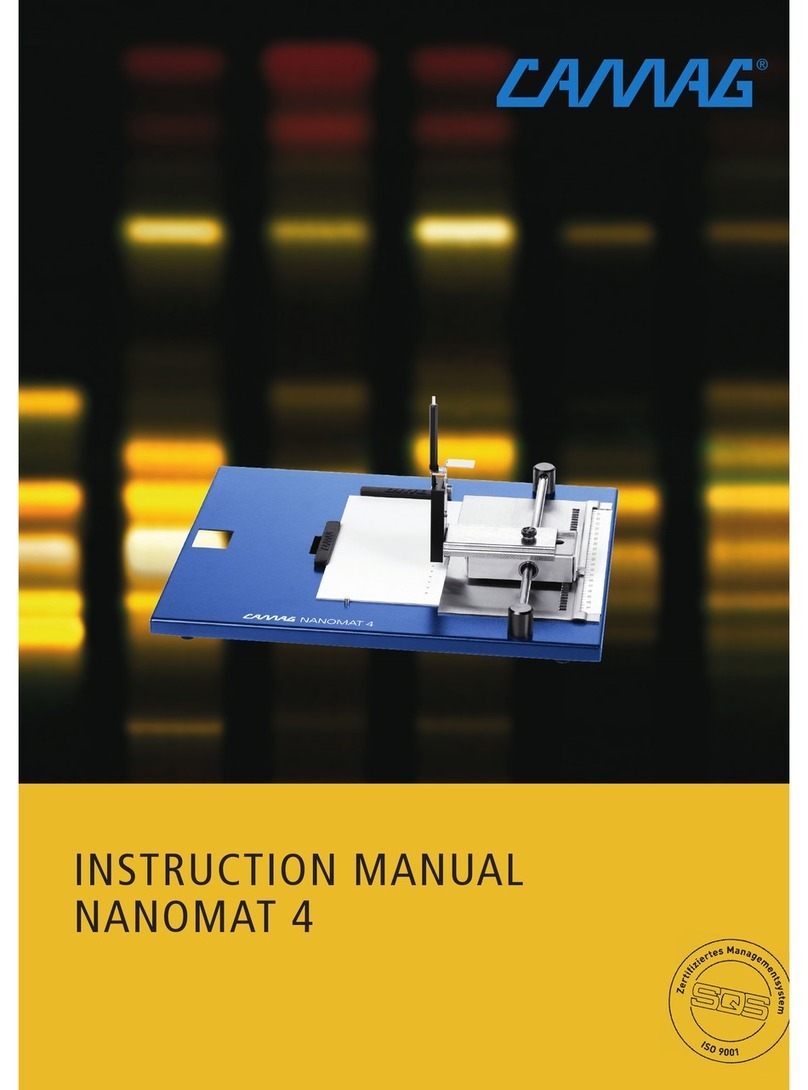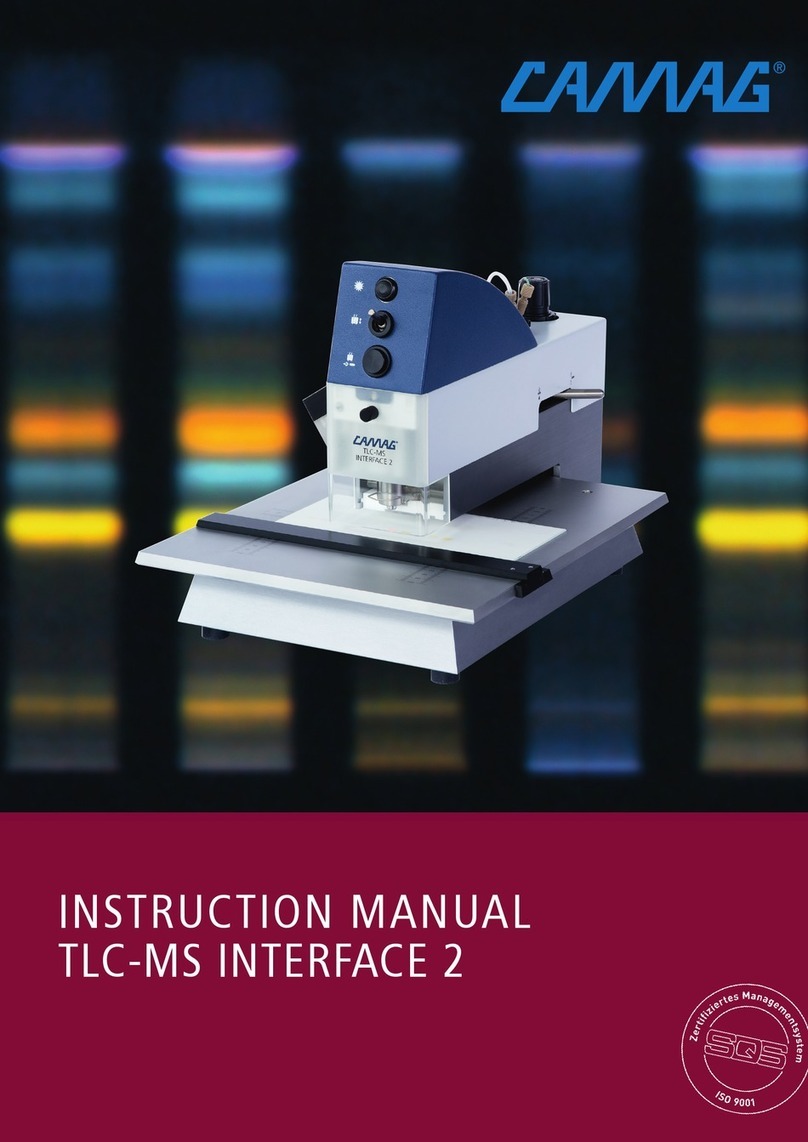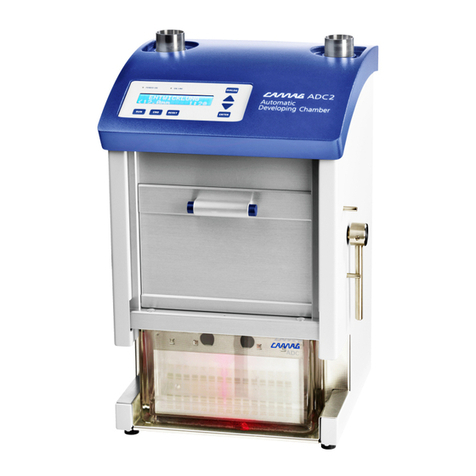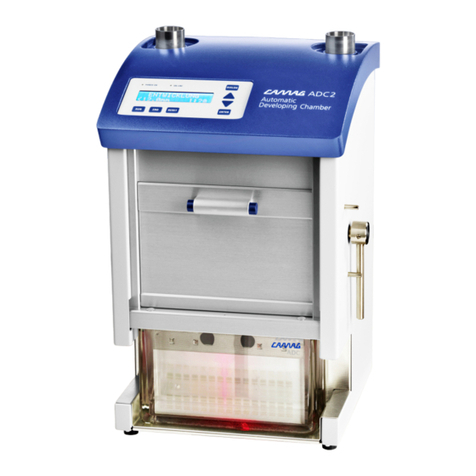
Content
1Introduction.................................................................................................................................... 1
1.1 Precaution................................................................................................................................. 1
1.2 Parts supplied with CAMAG Derivatizer ..................................................................................... 3
1.3 Spare parts for CAMAG Derivatizer ........................................................................................... 4
2Unpacking/Installation .................................................................................................................. 4
2.1 Unpacking ................................................................................................................................ 4
2.2 Installation environment............................................................................................................ 4
2.3 Installation ................................................................................................................................ 5
3Getting started ............................................................................................................................... 5
3.1 Intended use ............................................................................................................................. 5
3.2 Material compatibility ............................................................................................................... 6
3.3 Instrument ................................................................................................................................ 7
3.4 Control panel ............................................................................................................................ 8
3.5 State diagram ........................................................................................................................... 8
3.6 Nozzles ..................................................................................................................................... 9
3.7 Spraying level............................................................................................................................ 9
3.8 Insert/Remove plate ................................................................................................................ 10
3.9 Derivatization process ............................................................................................................. 11
3.9.1 Preparation of the reagents................................................................................................. 11
Preparation of the cleaning solution................................................................................................ 12
Setting the parameters.................................................................................................................... 12
Cleaning steps ................................................................................................................................ 12
Spraying steps................................................................................................................................. 14
3.10 Method to transfer from manual spraying or immersion to automated spraying ..................... 15
3.11 Recommendations for common derivatization reagents .......................................................... 16
3.11.1 Transfer from manual spraying to automated spraying (20 x 10 cm or 20 x 20 cm hood).... 18
3.11.2 Transfer from immersion to automated spraying (20 x 10 cm hood) ................................... 18
4Maintenance and Service ............................................................................................................ 20
4.1 Cleaning ................................................................................................................................. 20
4.2 Decontamination .................................................................................................................... 20
